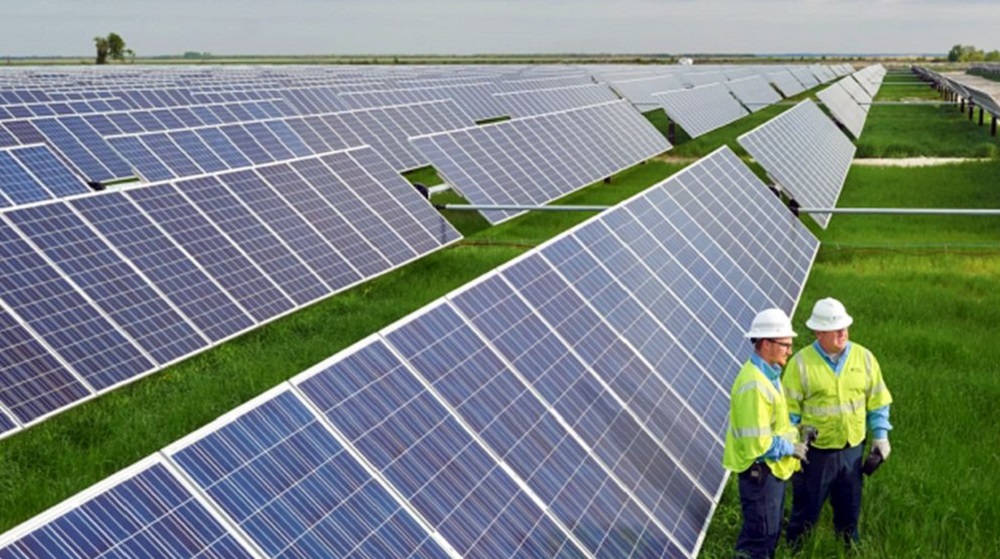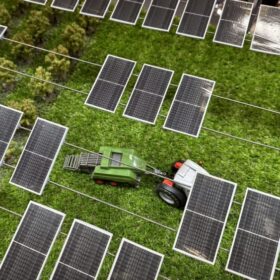With more than 300,000 buildings and 600,000 vehicles, the U.S. Government is the nation’s largest energy consumer. As a part of the Federal Sustainability Plan that directs the Government to achieve net-zero emissions by 2050, the Government is quickly ramping up use of solar energy at military bases, five of which will soon be drawing electricity from two solar installations in South Carolina.
In a partnership with Duke Energy valued at an estimated $248 million, the Department of Defense (DOD) will be the exclusive purchaser of all output generated by two new solar facilities. The five military installations across North Carolina and South Carolina to benefit from the clean energy include Fort Liberty, USMC-Camp Lejeune, USMC-Cherry Point, USAF Seymour Johnson and USAF Shaw.
“DoD is leading by example on climate change in ways that will spur new clean electricity production, create good-paying jobs, increase our resilience to climate change, and enhance our national security,” said Andrew Mayock, Federal Chief Sustainability Officer at the White House Council on Environmental Quality.
Duke Energy estimates that it will provide 135 MW and approximately 4.8 million MW-hours of renewable energy in both states over a 15-year delivery period. According to the DoD, these installations will achieve 75% of their 2030 carbon-free energy requirement. Fort Liberty, for example, will reduce its emissions from electricity by 27% compared to 2022, with cost savings possible by 2040. The two solar facilities, which are expected to become operational in 2026, will be developed, owned and operated by energyRe, according to Duke.
“This project is a great opportunity to assist our military departments and our warfighters in their decarbonization goals and is paramount to reaching our initial goals of Executive Order 14057, Catalyzing Clean Energy Industries and Jobs Through Federal Sustainability. DLA Energy is committed to supporting the administration’s clean energy initiatives and helping the military services and whole-of-government partners achieve their climate change goals,” said United States Air Force Col. Jennifer Neris, director of carbon pollution-free electricity for the Defense Logistics Agency.
Duke Energy reports that it currently owns, operates and purchases more than 5,100 MW of solar power on its energy grid in the Carolinas or enough to power nearly 1 million homes annually. North Carolina currently ranks No. 5 in the nation for overall solar power. With a portfolio of nuclear, hydro and renewable energy, the utility says more than half of its energy mix in North Carolina is carbon-free.
The DoD said in a statement that it will continue to seek partnership opportunities that enable the agency and other Federal partners to achieve President Biden’s carbon-free energy goals and build a robust, clean, and domestically based electricity supply chain by 2030.
“Our partnerships with utility companies are essential to delivering energy resilience for the Army,” said Rachel Jacobson, assistant secretary of the Army for Installations, Energy, and Environment. “These partnerships are helping us put microgrids with carbon-free energy generation and storage on our installations. And our continuing collaboration with Duke Energy allows the Army to contribute to a more reliable commercial grid that strengthens the resilience of the defense communities where our soldiers, military families, and civilians live. I am proud of these partnerships and look forward to expanding them so that our installations always have access to the electricity we need to defend the nation.”
This content is protected by copyright and may not be reused. If you want to cooperate with us and would like to reuse some of our content, please contact: editors@pv-magazine.com.









By submitting this form you agree to pv magazine using your data for the purposes of publishing your comment.
Your personal data will only be disclosed or otherwise transmitted to third parties for the purposes of spam filtering or if this is necessary for technical maintenance of the website. Any other transfer to third parties will not take place unless this is justified on the basis of applicable data protection regulations or if pv magazine is legally obliged to do so.
You may revoke this consent at any time with effect for the future, in which case your personal data will be deleted immediately. Otherwise, your data will be deleted if pv magazine has processed your request or the purpose of data storage is fulfilled.
Further information on data privacy can be found in our Data Protection Policy.